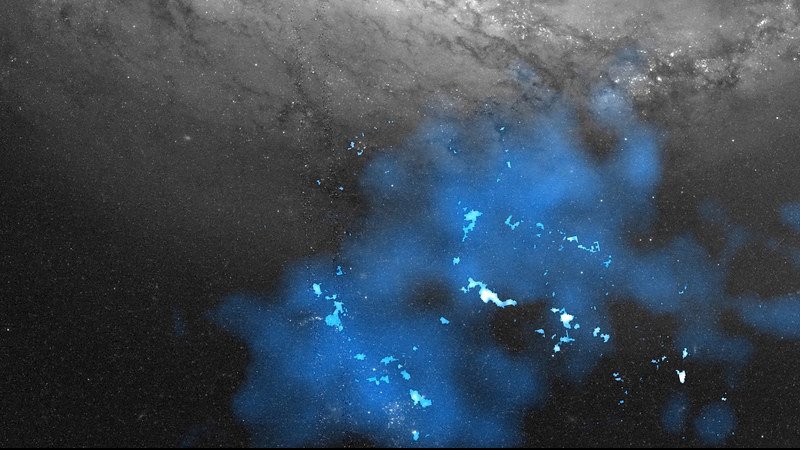More Water Ice On The Moon Than Previously Thought
Eddie Gonzales Jr. – MessageToEagle.com – The polar regions of the moon may contain significantly more water ice than previously thought, according to new research by UCLA space scientists.
The study points to the existence of previously undetected thick ice deposits on the moon.
 “The moon has lots of ice — it’s just buried below the surface,” said David Paige, a UCLA professor of planetary science. Rendering by Lior Rubanenko/UCLA
“The moon has lots of ice — it’s just buried below the surface,” said David Paige, a UCLA professor of planetary science. Rendering by Lior Rubanenko/UCLA
Over the past two decades, observations from telescopes and spacecraft have found glacier-like water ice deposits near Mercury’s poles, but none had been seen on the moon. The difference raised what is now one of the most important questions in planetary science: Why, despite their similar surface conditions, does the moon have so much less ice than Mercury?
“The simple answer is that the moon has lots of ice — it’s just buried below the surface,” said David Paige, a UCLA professor of planetary science and a co-author of the study, in a press release.
Unlike the Earth, the spin axes of the moon and Mercury are very small. As a result, craters and other depressions located near the poles on both bodies never see the sun, which makes them among the coldest places in our solar system. For decades it has been postulated these permanently shadowed regions are so cold that any ice trapped within them could survive for billions of years.
Radar observations of Mercury conducted two decades ago revealed thick, pure ice deposits. In 2014, NASA’s Messenger spacecraft imaged the ice deposits, and scientists determined that they were up to 50 meters thick and, at least in part, relatively fresh — between 10 million and 100 million years old.
Parallel investigations conducted on the moon, whose polar thermal environments are very similar to those of Mercury, found only patchy, shallow ice deposits. Paige said that difference was the impetus for the UCLA study.
Using data from Messenger and NASA’s Lunar Reconnaissance Orbiter spacecraft, they measured approximately 15,000 simple craters with diameters ranging from 2.5 to 15 kilometers (about 1.5 to 9 miles) on Mercury and the moon.
“We found that shallow craters tend to be located in areas where surface ice was previously detected near the south pole of the moon,” Lior Rubanenko, a UCLA graduate student, who led the study, said.
According to the study, the most probable explanation for those shallower craters is the accumulation of previously undetected thick ice deposits.
Written by Eddie Gonzales Jr. – MessageToEagle.com Staff










